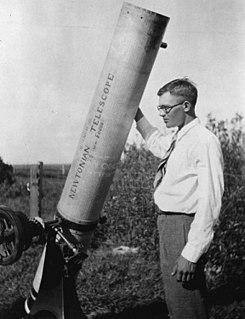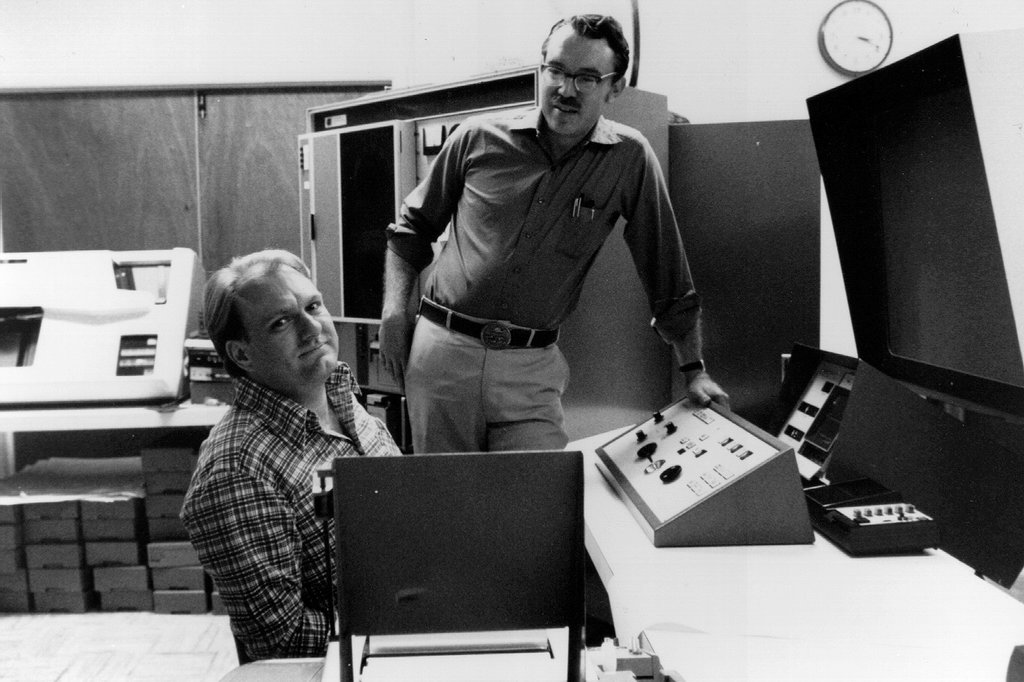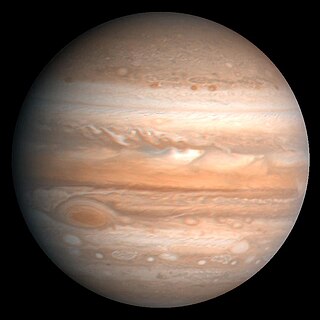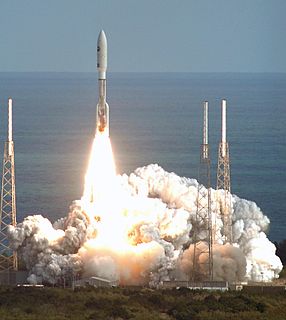See also
- Tom (disambiguation)
- Baugh (surname)
| This disambiguation page lists articles associated with the title Tombaugh. If an internal link led you here, you may wish to change the link to point directly to the intended article. |
Tombaugh may refer to:
| This disambiguation page lists articles associated with the title Tombaugh. If an internal link led you here, you may wish to change the link to point directly to the intended article. |

Clyde William Tombaugh was an American astronomer. He discovered Pluto in 1930, the first object to be discovered in what would later be identified as the Kuiper belt. At the time of discovery, Pluto was considered a planet, but was reclassified as a dwarf planet in 2006. Tombaugh also discovered many asteroids, and called for the serious scientific research of unidentified flying objects.

Following the discovery of the planet Neptune in 1846, there was considerable speculation that another planet might exist beyond its orbit. The search began in the mid-19th century and continued at the start of the 20th with Percival Lowell's quest for Planet X. Lowell proposed the Planet X hypothesis to explain apparent discrepancies in the orbits of the giant planets, particularly Uranus and Neptune, speculating that the gravity of a large unseen ninth planet could have perturbed Uranus enough to account for the irregularities.

Percival Lawrence Lowell was an American businessman, author, mathematician, and astronomer who fueled speculation that there were canals on Mars. He founded the Lowell Observatory in Flagstaff, Arizona, and formed the beginning of the effort that led to the discovery of Pluto 14 years after his death.

Pluto is a dwarf planet in the Kuiper belt, a ring of bodies beyond the orbit of Neptune. It was the first and the largest Kuiper belt object to be discovered. After Pluto was discovered in 1930 it was declared to be the ninth planet from the Sun. Beginning in the 1990s, its status as a planet was questioned following the discovery of several objects of similar size in the Kuiper belt, including the dwarf planet Eris. This led the International Astronomical Union (IAU) in 2006 to formally define the term "planet" — excluding Pluto and reclassifying it as a dwarf planet.

Charon, also known as (134340) Pluto I, is the largest of the five known natural satellites of the dwarf planet Pluto. It has a mean radius of 606 km (377 mi). Charon is the sixth-largest trans-Neptunian object after Pluto, Eris, Haumea, Makemake and Gonggong. It was discovered in 1978 at the United States Naval Observatory in Washington, D.C., using photographic plates taken at the United States Naval Observatory Flagstaff Station (NOFS).

Venetia Katharine Douglas Burney, as an English girl of 11 years old, was credited by Clyde Tombaugh with first suggesting the name Pluto for the planet he discovered in 1930. She was living in Oxford, England, at the time. As an adult she worked as an accountant and a teacher.

James Walter "Jim" Christy is an American astronomer.

William Henry Pickering was an American astronomer. Pickering constructed and established several observatories or astronomical observation stations, notably including Percival Lowell's Flagstaff Observatory. He led solar eclipse expeditions and studied craters on the Moon, and hypothesized that changes in the appearance of the crater Eratosthenes were due to "lunar insects". He spent much of the later part of his life at his private observatory in Jamaica.
Milton La Salle Humason was an American astronomer. He was born in Dodge Center, Minnesota.

1604 Tombaugh, provisional designation 1931 FH, is a rare-type Eos asteroid from the outer region of the asteroid belt, approximately 32 kilometers in diameter. It was discovered on 24 March 1931, by American astronomer Carl Otto Lampland at Lowell Observatory in Flagstaff, Arizona, in the United States. It was named after the discoverer of Pluto, Clyde Tombaugh.

The Jovian–Plutonian gravitational effect was a hoax phenomenon purported to cause a noticeable short-term reduction in gravity on Earth that was invented for April Fools' Day by the English astronomer Patrick Moore and broadcast on BBC Radio 2 on 1 April 1976.

The exploration of Pluto began with the arrival of the New Horizons probe in July 2015, though proposals for such a mission had been studied for many decades. There are no plans as yet for a follow-up mission, though follow-up concepts have been studied.
Tombaugh Cliffs is a group of ice-free cliffs which stand at the north side of the mouth of Pluto Glacier and face towards the George VI Ice Shelf which occupies George VI Sound, on the east side of Alexander Island, Antarctica. Photographed from the air by the Ronne Antarctic Research Expedition in 1947–48; surveyed by Falkland Islands Dependencies Survey from 1948 to 1950. The naming by the United Kingdom Antarctic Place-Names Committee continues the astronomy related or celestial theme displayed in the toponymy of this area. The cliffs were named for Clyde Tombaugh (1906-1997), an American astronomer who studied at Lowell Observatory and who first discovered the dwarf planet Pluto in 1930.

Tombaugh is an impact crater on Mars, located in the Elysium quadrangle. It measures 60.3 kilometers in diameter and was named after Clyde Tombaugh, American astronomer (1906–1997), who discovered the planet Pluto. The name was approved by the International Astronomical Union (IAU) in 2006.

Tombaugh Regio is the largest bright surface feature of the dwarf planet Pluto. It is just north of the equator, to the northeast of Cthulhu Macula and to the northwest of Krun Macula, which are both dark features. Its western lobe, a 1000 km-wide plain of nitrogen and other ices lying within a basin, is named Sputnik Planitia. The eastern lobe consists of high-albedo uplands thought to be coated by nitrogen transported through the atmosphere from Sputnik Planitia, and then deposited as ice. Some of this nitrogen ice then returns to Sputnik Planitia via glacial flow. Named after Clyde Tombaugh, the discoverer of Pluto, it is nicknamed the "heart" after its shape.

Cthulhu Macula is a prominent surface feature of the dwarf planet Pluto, that is reminiscent of a whale in shape. It is an elongated dark region along Pluto's equator, 2,990 km (1,860 mi) long and one of the darkest features on Pluto. It is west of the Sputnik Planitia region of Tombaugh Regio, also known as Pluto's "heart", and to the east of Meng-P'o, the easternmost of Pluto's "Brass Knuckles".

The geography of Pluto entails the delineation and characterization of regions on Pluto. Plutonian geography is mainly focused on what is called physical geography on Earth; that is, the distribution of physical features across Pluto and their cartographic representations. On 14 July 2015, the New Horizons spacecraft became the first spacecraft to fly by Pluto. During its brief flyby, New Horizons made detailed geographical measurements and observations of Pluto and its moons.

Lowell Regio is a region on the dwarf planet Pluto. It was discovered by the New Horizons spacecraft in 2015. The region corresponds to the Plutonian northern polar cap. It is named after Percival Lowell who established the observatory where Clyde Tombaugh discovered Pluto.
Clyde is a given name. Notable people with this name include: